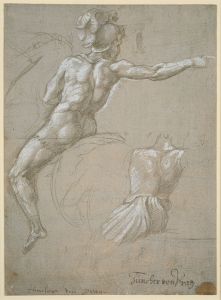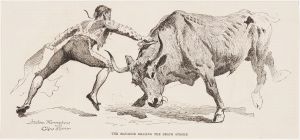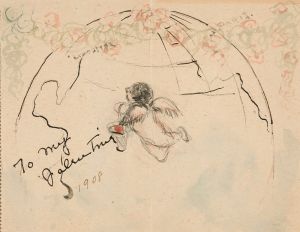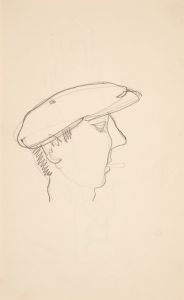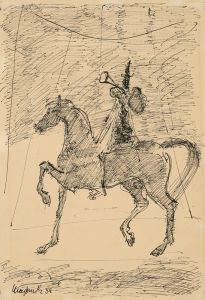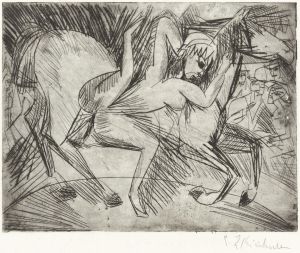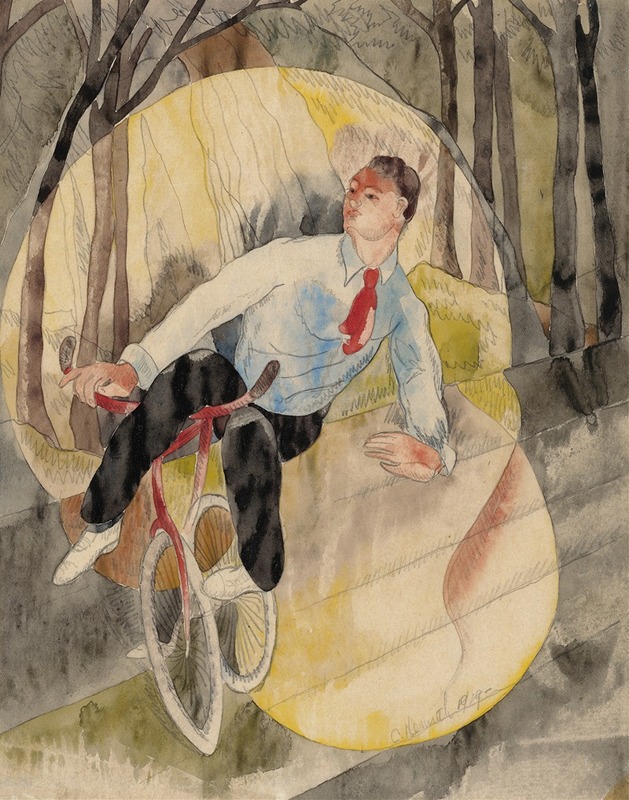
In Vaudeville, the Bicycle Rider
A hand-painted replica of Charles Demuth’s masterpiece In Vaudeville, the Bicycle Rider, meticulously crafted by professional artists to capture the true essence of the original. Each piece is created with museum-quality canvas and rare mineral pigments, carefully painted by experienced artists with delicate brushstrokes and rich, layered colors to perfectly recreate the texture of the original artwork. Unlike machine-printed reproductions, this hand-painted version brings the painting to life, infused with the artist’s emotions and skill in every stroke. Whether for personal collection or home decoration, it instantly elevates the artistic atmosphere of any space.
Charles Demuth was an American modernist painter known for his contributions to the Precisionist movement, which emphasized clean lines and geometric forms. One of his lesser-known works, "In Vaudeville, the Bicycle Rider," showcases his unique style and artistic interests during the early 20th century. While there is limited information available specifically about this painting, it is possible to contextualize it within Demuth's broader body of work and the cultural environment of the time.
Demuth was born in 1883 in Lancaster, Pennsylvania, and studied at the Pennsylvania Academy of the Fine Arts in Philadelphia. He later continued his education in Paris, where he was exposed to avant-garde movements such as Cubism and Fauvism. These influences are evident in his work, which often combines elements of abstraction with a focus on modern life and technology.
"In Vaudeville, the Bicycle Rider" likely reflects Demuth's interest in contemporary entertainment and the dynamic energy of the early 20th century. Vaudeville was a popular theatrical genre during this period, characterized by a variety of acts including music, dance, comedy, and acrobatics. The inclusion of a bicycle rider in the painting suggests a focus on movement and speed, themes that were prevalent in the modernist art of the time.
Demuth's work is often associated with the Precisionist movement, which emerged in the United States in the 1920s. Precisionism was characterized by a focus on industrial subjects, sharp lines, and a sense of order and clarity. While "In Vaudeville, the Bicycle Rider" may not fit neatly into this category, it shares the movement's interest in modernity and the changing landscape of American culture.
Throughout his career, Demuth was known for his watercolors and oils, often depicting flowers, architecture, and industrial scenes. His most famous work, "I Saw the Figure 5 in Gold," is a tribute to his friend, the poet William Carlos Williams, and exemplifies his Precisionist style with its bold colors and geometric forms. Although "In Vaudeville, the Bicycle Rider" is not as widely recognized, it contributes to our understanding of Demuth's exploration of modern themes and his ability to capture the spirit of his time.
Demuth's work was well-received during his lifetime, and he exhibited alongside other prominent artists of the period. Despite suffering from ill health throughout his life, he remained a prolific artist until his death in 1935. Today, his paintings are held in major collections, including the Metropolitan Museum of Art and the Whitney Museum of American Art.
In summary, while specific details about "In Vaudeville, the Bicycle Rider" are scarce, the painting can be appreciated within the context of Charles Demuth's broader artistic achievements and the cultural milieu of early 20th-century America. His work continues to be celebrated for its innovative approach and its reflection of the modern age.





